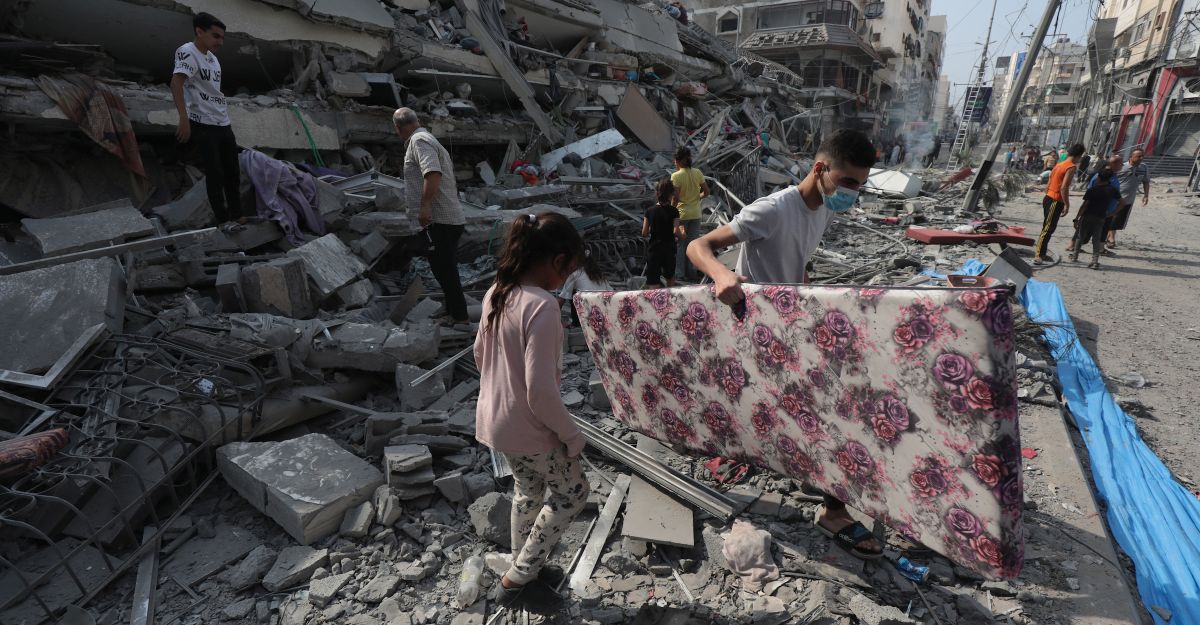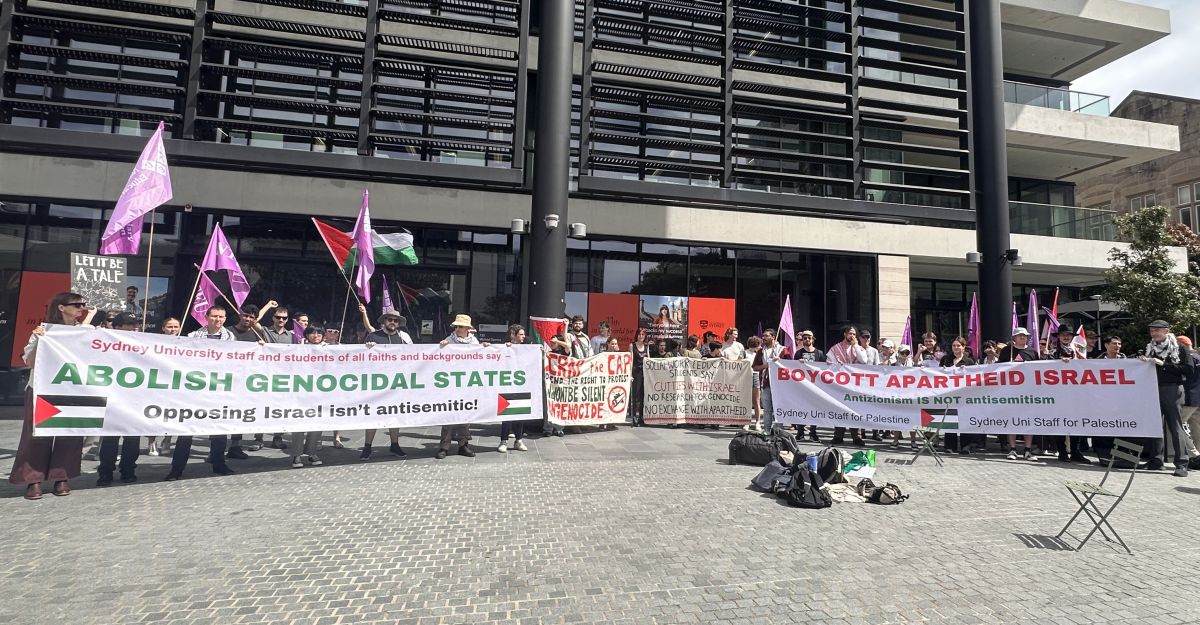Each of our homes is full of tales and stories that must be told. Our homes annoy the Israeli war machine, mock it, haunt it, even in the darkness.
Refaat Alareer
For Refaat Alareer, the late Professor of Literature at the Islamic University of Gaza, storytelling and memory have a distinct value in the capacity of Palestinians to maintain their cultural livelihood. As the title of his 2015 TEDx Shujaiya Talk suggests, ‘Stories Make Us’, Alareer was interested in the reproductive aspects of stories as resources that are socially shared, passed on between and beyond members of a family, passed on from one generation to another. As a literary scholar, Alareer was not only cognisant of the value of storytelling in terms of narrative and literary genre, but as a social practice of telling and listening. A conduit of memory, the practice of telling and listening to stories involve reproductive capacities for personal and social livelihood.
‘I am the person I am today because of these stories, because of my mum.’ The particular example Alareer shares with his audience alludes to his mother’s defiance in the face of Israeli violence. It concerns her stubborn efforts, when still a child, to attend school while the Israeli army was carrying out one or another of its onslaughts. His mother’s stories provide something like a reservoir of references, shaping his orientations to his circumstances, his embodied sense of place. Alareer claims that he does not merely listen to stories, but ‘lives stories.’ His memory, this is to say, is shaped by the way in which the stories he gains from his mother become part of his embodied livelihood: ‘so her experiences, her life, became my life. That’s how my life was shaped.’ Hence the title of his slide: ‘We are the stories told to us.’
Stories have a capacity to repair loss, to maintain a record of physical connections to the land, connections that have been broken, disrupting genealogies of generational continuity. His grandmother’s stories, Alareer observes, focus on the land her family once owned, ploughed and celebrated as a means of social livelihood and cultural orientation. Although the land has since been ‘physically occupied, it still lives in our memories, in our hearts, because we can easily visualize this.’ Stories promote the visualisation of memory, so that one develops a sense of geographical orientation, of certain houses adjacent to certain shops, of certain landmarks adjacent to others.
Memory, thus, does not merely recall actual experiences, but rather manifests as constellations of stories told and heard, complemented by the flashing images evoked by associations triggered into life, into breath. At the same time, these constellations take shape as particular ways of framing recollection. Considering how Alareer ’s family, like many Palestinians in Gaza, are refugees from the Nakba of 1948, 1967, and into the present, it is understandable that many of their stories bear the burden of displacement and expulsion, though in relation to steadfastness (sumud) and resistance.
Alareer relates another example of how he came to embody the stories he heard — how he carried them not only in his mind, but in his flesh, where their dormancy, Proust-like, could be sparked into life by association. He speaks about his mother’s astonishment when he tells her of ‘particular experiences that keep flashing into my mind when I realised something I hadn’t paid attention to before in my life.’ When she points out that it is impossible for him to recall such instances, as he was only one or two years of age at the time, he realises how his recollections, his memory, are constituted not by what happened, but by the stories that shape the value and significance of what happened. As Alareer observes: I ‘must have lived these stories; despite the fact that I can vividly describe these stories, I must have lived them through my mum’s stories.’
In light of Israel’s genocidal devastation of Gaza, Alareer’s notion of storytelling can be described in terms of infrastructural livelihood. Along with the murder of Palestinians, the calculated decimation of hospitals, churches and mosques, schools and universities, apartment blocks and service centres, Israel is destroying the institutional, documentary, and artifactual basis by which Palestinians maintain their history and memory. The levelling of the Gaza municipality buildings, along with its Central Archives, on November 28, 2023, is one example of the irreparable damage to cultural and intellectual infrastructure. At the same time, domestic and public space are turned into ruins, affecting the capacities of Palestinians to not only physically live in place, but maintain a sense of orientation to place.
This calculated destruction extends into the family home — which, besides providing shelter and location, constitutes a site for the reproduction of memory and storytelling. Heirlooms, handed down from one generation to another, sit on window ledges or dining tables. Memory artefacts can include a modest fruit bowl, dinner plates, or cutlery. They not only bear witness to memory of the past, but contain within their material contours the potential for future generations to reference and narrate the past. The family home is a site of collection and storage, where artefacts often come to life as focal points of memory and storytelling. The word story bears associations with store, or storage, enfolding capacities to recall memory and history as practices of storytelling in the present. Like an informal archive, artefacts don’t merely bear witness to the past, but like time capsules have the potential to become valuable for future references.
Photographs are a good example of what the Palestinian artists and interventionist archivists Basel Abbas and Ruanne Abou-Rahme call a ‘living archive,’ or ‘archival multitude.’ There could be nothing more dormant, perhaps, than a photograph, a still image whose initial exposure freezes a moment in time, vacating an image from its context. And yet, photographs withhold a sly potential to provoke an awakening of time, reanimating the livelihood of context and circumstance. Whether stored in an album or as a slide show on the computer, photographic images initiate memory as an exchange of stories. While looking at photographs people are often overcome with an uncanny sense of familiarity, with the strangeness of the familiar: Did I really look like that? Is that really Aunt Nawal? But she must have been very young then! He has such a sly smile on his face! Oh, looks like Dad liked to style his hair when he was younger.
Family photographs have an uncanny effect of looking back at the person viewing them. They are reminders that one’s memories are always stunted, incomplete, swayed by subtle strategies of forgetfulness so as to avoid embarrassment, shame, or social pain. At the same time, they bring joy and pleasure in reminiscing, recalling friends and family, especially those that have passed away. Towards managing the emotional pain of loss, photographs inspire viewers to tell stories, to share intimacy — animating, giving depth, and breathing life into images that have been reduced to the flatness of a surface.
For Palestinians, the photographic album — by which I mean the storing of images and stories in relation to their animated viewing — carries traces of displacement, expulsion, and exile, both within historic Palestine and into the wider world, the Kharij. In After the Last Sky, Edward Said calls this a ‘double vision,’ seeing ‘ourselves at once inside and outside our world.’ And yet, while photographic images capture Palestinian disconnection and discontinuity, displacement and exile, across and between al-Kharij and al-Dakhil, the memories and stories they both contain and potentially expose work to maintain a record of their defiance. As Alareer well knew, the practice of exchanging narrative accounts of experience play an important role in both recording what takes place and the capacities of Palestinians to maintain a storehouse of narrative references — a storehouse that extends into the future.
Currently, in Gaza, Israel is destroying the institutional basis for the reproduction and maintenance of social and cultural life, as well as administrative capacities to maintain records and documentation by which social and cultural life is organised. But in demolishing Palestinian homes, it is also destroying family artefacts, heirlooms, personal records, books, photographs and photographic collections that constitute a family’s capacity to reproduce its memories. The intentions are clear: to destroy both the social and cultural infrastructure by which Palestinians reproduce their capacities for life.
In this context, the practice of storytelling becomes all the more urgent, secondary only to the immediate distress of finding shelter, food, water, and medical care. Storytelling is urgent because it involves maintaining a narrative of what happened, and of what is happening, recording loss and displacement. The urgency also involves maintaining archives, or storehouses, however informal, by which stories can be stored, recalled, told and heard. Alareer references Chinua Achebe’s claim that if ‘the lions’ don’t themselves ‘have their own historians,’ then their history will be told by the hunters. Consequently, history ‘will always glorify the occupier, will always glorify the colonizer, rather than the colonized, the oppressed, the indigenous, the rightful people of the land.’
What Alareer is saying is that, if stories are no longer told and heard, a vacuum is created of which others will take advantage, filling the gaps with their stories. Referring to Said, he says: ‘if we stop caring about stories, if we stop telling our stories, if we stop listening to our parents, we create space, we create vacuum, for others to occupy this virtual space in our past, in our heart.’ Not to tell stories amounts to a ‘betrayal of our homeland.’ The homeland, to be sure, lies scattered and dismembered, segmented by an occupation rooted in the Nakba of 1948. As a modality of social and cultural infrastructure, storytelling resuscitates memory into life, through practices of resisting the narratives of the hunters.
Image: Palestinians inspect the ruins of Aklouk Tower destroyed in Israeli airstrikes in Gaza City on October 8, 2023 (Naaman Omar, APA images)



